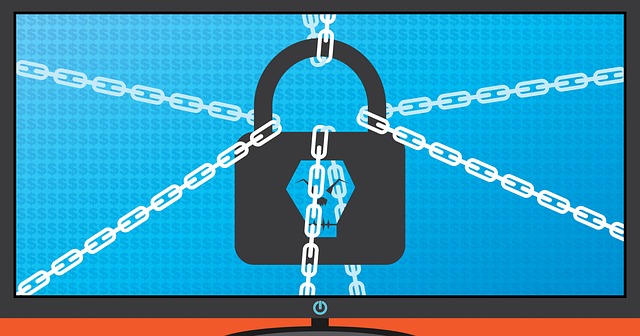
Summary
Codefinger ransomware targets Amazon S3 buckets by exploiting server-side encryption. The attackers encrypt data and demand payment for decryption keys, often threatening permanent data deletion. This attack emphasizes the importance of robust cloud security measures and least privilege access.
Explore the data solution with built-in protection against ransomware TrueNAS.
** Main Story**
The cloud, once hailed as a fortress of data security, now faces new and evolving threats. One such threat, dubbed Codefinger, has emerged as a particularly insidious form of ransomware, targeting Amazon S3 buckets, the core storage service of AWS. This new ransomware doesn’t rely on traditional methods of infiltration and encryption. Instead, it cleverly exploits AWS’s own security features against its users, turning a shield into a weapon.
Codefinger: A New Frontier in Ransomware
Codefinger leverages Server-Side Encryption with Customer-Provided Keys (SSE-C), a feature designed to give users granular control over their data encryption. In a typical SSE-C setup, the user manages and provides the encryption keys, ensuring only they can decrypt the data. Codefinger attackers exploit compromised AWS credentials to access S3 buckets and encrypt the data using SSE-C with keys they control. This leaves the victim unable to access their data without the attacker’s key. This attack does not exploit a vulnerability in AWS itself; it utilizes legitimate functionalities with compromised credentials. This underscores the crucial role of robust credential management and access control. Once the attackers encrypt the data, they typically demand a ransom for the decryption keys. Adding to the pressure, they often utilize the S3 Object Lifecycle Management API to schedule the encrypted files for deletion within seven days. This creates a sense of urgency, pushing victims to pay the ransom quickly. The attack represents a significant shift in ransomware tactics, demonstrating how malicious actors adapt and exploit existing cloud features to achieve their goals.
Understanding the Attack Workflow
The Codefinger attack follows a distinct workflow:
- Initial Access: Attackers gain access to the victim’s AWS account through various means, such as compromised API keys, leaked credentials, or reused passwords from other data breaches. Publicly exposed or poorly secured credentials pose a significant risk.
- Discovery and Credential Abuse: Once inside, attackers explore the account to locate S3 buckets and the necessary permissions to manipulate objects. They abuse stolen or compromised credentials with privileges for
s3:GetObjectands3:PutObjectactions. This highlights the importance of least privilege access where users only have permissions required for their tasks. - Encryption via SSE-C: The attackers encrypt the S3 objects using SSE-C with their own keys, making the data inaccessible to the victim. Since the encryption process uses AWS’s own systems, recovery without the attacker’s key is impossible, even with backups if they reside in the compromised account.
- Lifecycle Policy Manipulation: To increase pressure, attackers configure the S3 lifecycle policy to automatically delete the encrypted data within a short period, usually seven days. This creates a tight deadline for the victim to pay the ransom.
- Ransom Demand: Finally, attackers leave ransom notes, providing instructions for payment, usually through cryptocurrency, and a means of communication to receive the decryption keys after payment.
Protecting Your Cloud Environment from Codefinger and Similar Threats
The Codefinger attack emphasizes the importance of robust security measures in cloud environments. Here’s how organizations can strengthen their defenses:
- Credential Management: Prioritize strong password policies and implement multi-factor authentication (MFA) for all AWS accounts. Regularly audit and rotate access keys, and avoid hardcoding credentials in code or configuration files. Consider using a secrets management service to securely store and manage credentials.
- Least Privilege Access: Adhere to the principle of least privilege, granting users only the permissions necessary for their specific roles and tasks. Regularly review and revoke unnecessary permissions. Implement strong identity and access management (IAM) policies to control access to S3 buckets and other AWS resources.
- Versioning and Backups: Enable S3 versioning to preserve previous versions of objects, allowing for recovery in case of accidental or malicious modification. Maintain regular backups of critical data in a separate, secure location, independent of the compromised AWS account.
- Monitoring and Detection: Implement robust security monitoring to detect unusual activity in your AWS environment, such as unauthorized access attempts, suspicious API calls, or unexpected changes to lifecycle policies. Utilize intrusion detection and prevention systems to identify and block malicious traffic.
- Incident Response Plan: Develop a comprehensive incident response plan to address ransomware attacks and other security incidents. This plan should outline procedures for containment, eradication, recovery, and communication. Regular testing and drills will ensure readiness in case of an attack.
The rise of sophisticated attacks like Codefinger demonstrates that organizations must adopt proactive security strategies to protect their cloud assets. By implementing robust credential management, least privilege access controls, versioning, backups, and continuous monitoring, they can effectively mitigate the risks posed by this evolving threat landscape. As of 2025-03-04, the information presented here is up to date but subject to change as the threat landscape evolves.


So, Codefinger locks up your Amazon S3 buckets and holds your data hostage? Guess AWS is now offering a new service: cloud-based kidnapping. Wonder if they take Bitcoin, or if I can haggle for a discount using my Prime membership.
Haha, cloud-based kidnapping is a great analogy! The scary thing is, they essentially *are* holding your data hostage. While I doubt Prime offers a discount, good credential hygiene and robust access controls are your best defense against these digital ransom demands! It’s all about layering those security measures.
Editor: StorageTech.News
Thank you to our Sponsor Esdebe